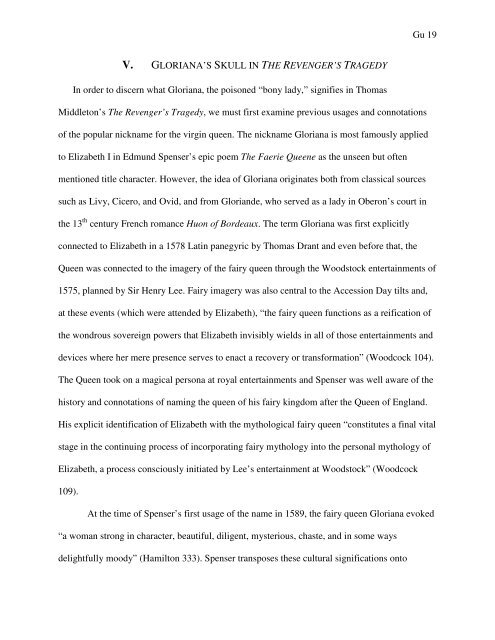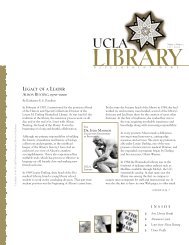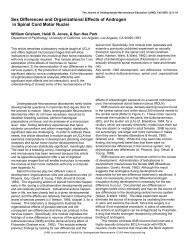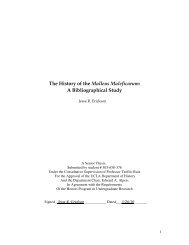Research Paper - UCLA Library
Research Paper - UCLA Library
Research Paper - UCLA Library
Create successful ePaper yourself
Turn your PDF publications into a flip-book with our unique Google optimized e-Paper software.
V. GLORIANA’S SKULL IN THE REVENGER’S TRAGEDY<br />
In order to discern what Gloriana, the poisoned “bony lady,” signifies in Thomas<br />
Middleton’s The Revenger’s Tragedy, we must first examine previous usages and connotations<br />
of the popular nickname for the virgin queen. The nickname Gloriana is most famously applied<br />
to Elizabeth I in Edmund Spenser’s epic poem The Faerie Queene as the unseen but often<br />
mentioned title character. However, the idea of Gloriana originates both from classical sources<br />
such as Livy, Cicero, and Ovid, and from Gloriande, who served as a lady in Oberon’s court in<br />
the 13 th century French romance Huon of Bordeaux. The term Gloriana was first explicitly<br />
connected to Elizabeth in a 1578 Latin panegyric by Thomas Drant and even before that, the<br />
Gu 19<br />
Queen was connected to the imagery of the fairy queen through the Woodstock entertainments of<br />
1575, planned by Sir Henry Lee. Fairy imagery was also central to the Accession Day tilts and,<br />
at these events (which were attended by Elizabeth), “the fairy queen functions as a reification of<br />
the wondrous sovereign powers that Elizabeth invisibly wields in all of those entertainments and<br />
devices where her mere presence serves to enact a recovery or transformation” (Woodcock 104).<br />
The Queen took on a magical persona at royal entertainments and Spenser was well aware of the<br />
history and connotations of naming the queen of his fairy kingdom after the Queen of England.<br />
His explicit identification of Elizabeth with the mythological fairy queen “constitutes a final vital<br />
stage in the continuing process of incorporating fairy mythology into the personal mythology of<br />
Elizabeth, a process consciously initiated by Lee’s entertainment at Woodstock” (Woodcock<br />
109).<br />
At the time of Spenser’s first usage of the name in 1589, the fairy queen Gloriana evoked<br />
“a woman strong in character, beautiful, diligent, mysterious, chaste, and in some ways<br />
delightfully moody” (Hamilton 333). Spenser transposes these cultural significations onto











